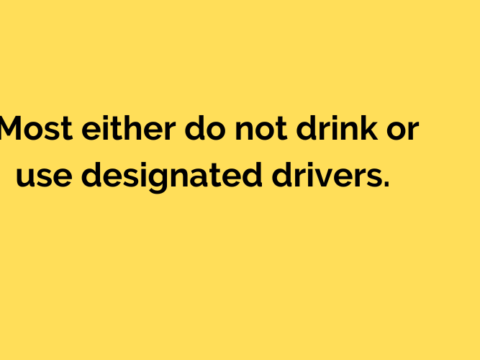This is about the classic “third-person effect”; it is not for me (the first person), or you (the second person), it is for others (the third person).
Think about this real scenario:
A group of researchers showed a set of messages prepared against drink-driving to a group of 201 drivers. They asked the respondents, among many, the following two questions:
1. To what extent you would be influenced by these advertisements?”
2. To what extent other drivers, in general, would be influenced by these advertisements”.
The response items ranged from 1 (not influenced at all) to 7 (extremely influenced).
The researchers showed the third-person effect in this study; in general, the respondents thought some types of messages were good for others than themselves.
The above findings were published by Lewis and her colleagues in 2008. I found this while I was researching for a similar research project. You can read the full paper through this link.
This phenomenon was coined as the “Third-Person Effect” by Davison in 1983; he used his findings and several other studies in conceptualising it. Since then, a large number of research studies appeared including several reviews about a variety of fields such as mass communication, media violence, public service advertisements etc.
Have you thought about it?
This finding has several practical implications in our daily lives as well as when we are designing messages not only for road safety but in almost all other subject areas too. So far, research has shown that the “third-person effect” operates in our all daily activities.
According to these researchers, our current road safety messages may not be effective for men at least to an extent that we expect. However, the effect did not show the same level of influence on women when compared to men. They also found that men’s third-person effect is higher than women’s for negative, fear-evoking appeals whereas the opposite holds for humorous appeals.
Can this be a questionnaire artefact? In other words, is it possible that these responses may be due to the way that we frame the question?
In 1999, Richard Perloff found the answer to this question; citing many studies, he showed that even after counterbalancing question formats and order, still, the third-person effect survived. That means the phenomenon is a very robust one. To support this proposition, he cited two compelling example sentences: “I let influenced by advertisements when I go shopping” and “Advertisements influence me when I go shopping”. Although we are more likely to accept the influence on us when we are confronted with the first sentence rather than the second, he argued the third-person effect still holds.
In Perloff’s critical review, he further discusses another related association between the effect magnitude and the perceived social distance between the assessor and the “comparison other”; again citing studies, he showed that the effect’s magnitude increases when the perceived social distance widens.



